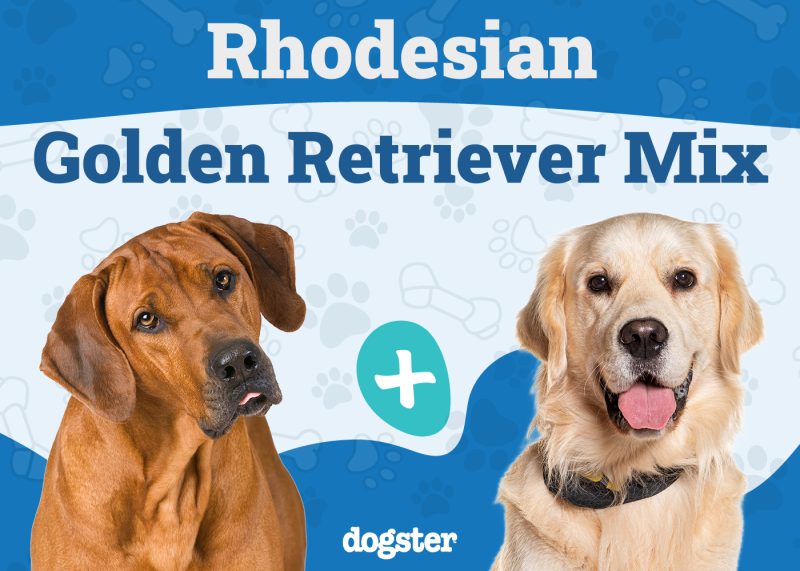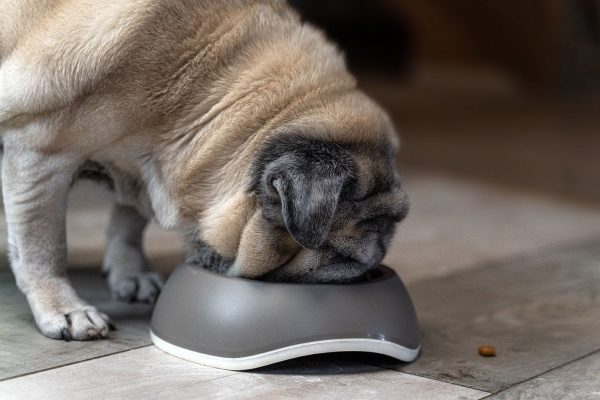The Doberman Pinscher is a stunning breed that was first bred in the late 1800s as a guard dog. Known for their stamina, strength, and intelligence, Dobies not only make excellent protectors but also loving family pets. They are very versatile and have even been used for a variety of tasks including police and military work, rescue operations, and as service dogs.
Dobermans have an average lifespan of 10 to 13 years but like all purebred dog breeds, they are prone to several health problems. Keep reading to learn more about these conditions, what causes them, and how they are diagnosed and treated.

The 8 Common Health Problems in Dobermans
1. Gastric Dilatation-Volvulus
- Enlarged abdomen
- Retching
- Restlessness
- Excessive salivation
- Pain or whining when the abdomen is touched
Gastric dilatation and volvulus, or GDV, is a life-threatening condition that is triggered when the stomach fills with gas, fluid, or food, leading to gastric dilatation or bloat. Gastric dilatation can further progress into what’s called a volvulus, which is when the dilated stomach twists over its own axis causing a blockage in both the entrance from the esophagus and the exit into the intestines. This disrupts blood flow to the stomach and other organs, which quickly leads to shock.
Causes
Genetic predispositions cause certain breeds to be more likely to experience bloat. GDV is most commonly seen in large, deep-chested dogs, though any dog can be affected by the condition. Dogs seven years of age or older are more than twice as likely to develop GDV than those in the two-to-four-year age range.
Several different causes could lead to bloat, including ingestion of a foreign object, eating one large meal per day, eating too quickly, drinking, or eating too much in one sitting, and exercising after eating.
Diagnosis
Since GDV is a medical emergency, veterinary intervention is needed immediately. An X-ray will be able to show if the dog is suffering from simple bloat, which means the stomach is only dilated, or if the bloat has progressed to GDV, which means it has twisted.
Treatment
Treatment of GDV must be prompt because once the stomach twists, it can lead to death in as little as an hour. Surgical treatment is the only option available to save the dog’s life. The surgery involves untwisting the stomach and sewing it to the inside of the body wall to prevent it from happening again. Depending on the severity of the condition and the damage that has been done, part of the stomach or the spleen may need to be removed as well.
Intravenous fluids with electrolytes, pain medication, and antibiotics will be given to treat shock, improve circulation, reduce pain, and prevent or treat any infection. An electrocardiogram (ECG) will typically be used to monitor for any heart abnormalities that can be caused by the abdominal pressure restricting the diaphragmatic movement and the resulting decreased oxygen consumption through respiration and the resulting damage to the heart’s muscle.

2. Hypothyroidism
- Weight gain
- Lethargy
- Dry, dull coat
- Recurring skin or ear infections
- High blood cholesterol
Hypothyroidism or underactive thyroid is a condition that occurs when a dog’s thyroid isn’t producing enough essential thyroid hormones to properly regulate the metabolism, causing the metabolism to slow down.
Causes
Most often, lymphocytic thyroiditis or idiopathic atrophy of the thyroid gland are the causes of hypothyroidism. Both of these conditions remain poorly understood but each results in damage to thyroid function.
With lymphocytic thyroiditis, the immune system attacks the thyroid, while in cases of idiopathic thyroid gland atrophy results in thyroid tissue being replaced by fat. These two conditions account for 95% of cases of hypothyroidism in dogs while the other 5% is related to rarer diseases.
Diagnosis
If hypothyroidism is suspected, a blood sample will be collected and tested so that the veterinarian can measure the thyroid hormone levels. Thyroid testing is used to both diagnose and monitor the treatment of the condition.
Treatment
Treatment for hypothyroidism typically involves a prescription for the synthetic thyroid hormone levothyroxine or L-T4. Regular blood tests are often required to monitor the progress of the treatment. Once the hormone levels become stabilized your dog will require the prescription for the rest of its life.
If you are concerned about the health and well-being of your pet, seek veterinary advice for the best course of action.
3. Von Willebrand Disease
- Prolonged bleeding after trauma or surgery
- Bleeding from the nose, gums, or vagina
- Blood in the urine or feces
- Excessive bruising
Von Willebrand’s disease is a hereditary bleeding disorder caused by the deficiency of the Von Willebrand factor, which is a protein in the blood that aids in clotting. This condition is most often observed in Dobermans, German Shepherds, Golden Retrievers, Poodles, and Shetland Sheepdogs.
Causes
The cause of Von Willebrand’s disease is the result of an inherited gene mutation. When an injury occurs, the platelets stick to the damaged tissue and form a clot to prevent further bleeding. The Von Willebrand factor helps the platelets stick to each other, so a deficiency results in abnormal, excessive bleeding after trauma.
Diagnosis
A blood sample can be collected to measure the amount of the Von Willebrand factor in the blood to confirm the diagnosis. DNA testing is also available for certain breeds, including Dobermans, and can be completed by using a mouth swab.
It is very important to know if your dog is suffering from Von Willebrand’s disease so that the veterinarian can take precautions to control bleeding in the event of an injury or surgery.
Treatment
There is no cure for Von Willebrand disease, but dogs can be treated with blood or plasma transfusions to increase the amount of the Von Willebrand factor in their system. There is also a synthetic hormone called desmopressin acetate that can also be administered to increase the Von Willebrand factor.
Any dog diagnosed with Von Willebrand disease or those that have been identified as a carrier should never be bred. This will help prevent the inherited condition from passing on to any future offspring.
4. Hip Dysplasia

- Weakness in the hind legs
- Pain in the hind legs
- Limping
- Reluctance to stand, walk, or climb the stairs
Hip dysplasia is a degenerative condition where the hip joints break down. Dogs have a ball and socket hip joint where the ball on top of the femur should fit snugly into the socket to allow proper hip movement. Hip dysplasia occurs when the socket or ball grows faster or slower than the other.
When the ball does not fit correctly in the socket, it can cause the joints to wear on each other, eventually loosening and shifting position, causing worsening pain and further inflammation and damage to the structures involved. If left untreated, hip dysplasia can lead to the inability to walk.
Causes
Hip dysplasia is a hereditary condition most often seen in larger dogs. Certain contributing factors can also enhance a dog’s likelihood of developing hip dysplasia. This includes excessive growth rate, nutritional imbalance, certain types of vigorous exercise, and being overweight or obese.
Diagnosis
The veterinarian will consider clinical signs and perform a thorough physical examination to identify any palpable laxity in the joints. An X-ray of the hips is generally the method used for diagnosing hip dysplasia.
Treatment
Once the diagnosis is confirmed, the veterinarian will go over the best treatment plan depending on your dog’s medical history, the severity of the condition, and any contributing factors. Treating hip dysplasia consists of helping your dog maintain their mobility and keeping its pain as minimal as possible.
Dogs will need to be kept on a healthy diet, get appropriate exercise, and may be prescribed pain medication or even corticosteroids for management. Joint supplements, massages, physical therapy, and other alternative therapies are also available to help manage hip dysplasia.
5. Dilated Cardiomyopathy
- Exercise intolerance
- Weakness
- Coughing
- Rapid breathing
- Increased breathing effort
- Restlessness
- Collapse
- Sudden death
Dilated cardiomyopathy or DCM is a disease of the heart muscle resulting in a decreased ability of the heart to generate pressure to pump blood through the vascular system. Heart valves may begin to leak, which can lead to a buildup of fluids in the chest and abdomen, which is known as congestive heart failure.
Causes
The cause of DCM is a subject of debate. Evidence suggests that there is a genetic susceptibility related to the condition since certain breeds are more likely to suffer from DCM than others. The incidence of DCM increases with age and typically affects dogs from 4 to 10 years old.
In addition to genetics, there are also other factors believed to contribute to dilated cardiomyopathy, including nutritional deficiencies related to taurine and carnitine, and infectious diseases.
Diagnosis
A thorough physical examination will need to be completed and certain diagnostic tests will need to be run to rule out other diseases and to confirm the diagnosis of DCM. X-rays can reveal whether the dog has an enlarged heart or any fluid buildup around the lungs.
An electrocardiogram can reveal any arrhythmias or an abnormally rapid heart rate. An echocardiogram or ultrasound of the heart is the only way to definitively diagnose the condition since it can show the thickness of the heart muscle and each heart chamber’s ability to pump blood.
Treatment
Treatment for dilated cardiomyopathy may be varied. It generally includes prescription medications to increase the heart’s ability to pump, manage any arrhythmias, and dilate blood vessels to improve circulation. Diuretics are often administered to decrease fluid accumulation. The long-term prognosis is typically poor for dogs that have already begun showing clinical signs of heart failure.

6. Wobbler Syndrome
- Strange wobbly gait
- Neck pain
- Stiffness
- Holding the head down
- Crying when shaking head
- Weakness
- Short-stride walking
- Spastic or weak front limbs
- Muscle loss near the shoulders
- Increased extension of all four limbs
- Difficulty standing
- Partial or complete paralysis
Wobbler syndrome is a neurologic disease that affects the cervical spine and results in loss of motor function and coordination. It is most often a disease seen in large dog breeds. Small dogs have presented with the condition, but the occurrence is very rare. In a study of 104 dogs with wobblers syndrome, only 5 of those dogs were small. The condition tends to affect middle-aged to older dogs.
Causes
The neurological signs present as a result of spinal cord compression. In Dobermans, compression is typically caused by having a small spinal canal with disc herniation. It can also be due to a small spinal canal with bony changes affecting the spinal cord. The spinal nerves or the nerve roots may also be compressed, which causes a lot of pain and discomfort.
Diagnosis
To diagnose wobbler syndrome, X-Rays of the cervical spine may show some abnormalities like bony lesions but more advanced imaging like an MRI or CT scan would be required to determine the degree of spinal cord compression to definitively diagnose the condition.
Treatment
Medical management and surgery are the two types of treatment for wobbler syndrome. Medical management generally consists of restricting activity and using corticosteroids to reduce the swelling of the spinal cord due to compression.
Dogs will often show improvement with the use of steroids but will worsen when they are discontinued. Medical management is the typical course of action for those who don’t make ideal surgical candidates like elderly dogs or those showing very mild clinical signs.
Surgery is recommended in dogs with severe signs and who are failing to respond to medical management. Surgical treatment of the condition is dependent on the specific lesion causing the spinal cord compression.

7. Intervertebral Disc Disease (IVDD)
- Weakness
- Pain
- Unsteady walking
- Unwillingness to jump
- Anxious behavior
- Lethargy
- Lack of appetite
- Paralysis
- Hunched back or neck with tense muscles
- Loss of bladder and/or bowel control
Intervertebral disc disease or IVDD is a degenerative disease that affects the spinal cord and causes mobility issues and pain. IVDD is the result of the shock-absorbing discs between the vertebrae gradually beginning to harden until they are unable to cushion the vertebrae. These hardened discs will typically bulge or rupture, causing compression of the spinal cord. This can damage nerve impulses, including those that control the bowels and bladder.
Causes
Since intervertebral disc disease is a degenerative condition, it is caused by the hardening of those jelly-like discs over a period of time. The condition is common in dogs with short legs and a long back such as Dachshunds, Corgis, and Basset Hounds, and interestingly also in older Doberman Pinschers.
Diagnosis
IVDD typically goes unnoticed until it starts causing the dog pain. If your dog begins showing any signs, they will need to see a veterinarian as soon as possible. Diagnostic testing for intervertebral disc disease typically includes X-rays, a neurological exam, and possibly an MRI to help locate the discs causing the problems.
Treatment
Mild to moderate cases of IVDD may be treated without surgery. This includes the use of anti-inflammatory medications, restriction of activity, and physical therapy. Severe cases typically require surgical intervention.
The goal of the surgery is to remove the diseased intervertebral disc material and relieve pressure on the spinal cord to restore normal blood, improve mobility, relieve pain, and prevent further issues with the discs in the future. In some cases, multiple surgeries may be required.
Physiotherapy, including acupuncture, laser, massages, and hydrotherapy, are also important components of the treatment.
8. Progressive Retinal Atrophy
- Dilated pupils
- Abnormally reflective eyes
- Nervousness at night
- Reluctance to enter dark areas
- Bumping into objects
- Cataract formation
Progressive retinal atrophy is an inherited eye disease that results in cell degeneration of the retina, leading to blindness. This condition is painless and progresses slowly over time. It often begins with difficulty seeing well at night.
Causes
Progressive retinal atrophy is the result of several defective gene variants and is inherited from parents. Dogs with degenerative PRA are born with normal rods and cones within the retina, but the cells will begin to break down during adulthood.
Diagnosis
Progressive retinal atrophy is diagnosed during an eye exam with a focus on the retina. Cataracts may develop in the late stages of the disease and may be visible in some cases. Referral to a veterinary eye specialist may be needed to confirm the diagnosis or for further tests, especially if cataracts are blocking the view of the retina.
Treatment
There is no cure for PRA and treatment is focused on keeping a dog comfortable and secure as their vision continues to decline. They will need help avoiding injuries and feeling safe in their environment. Owners may often use safety gates, guide them with a leash in unfamiliar areas, and even keep the same furniture arrangement so they can memorize it and navigate accordingly.
Remember to have regular vet visits when owning a Doberman to keep their health and well-being. If you’re concerned about your dog’s health we suggest you speak to a vet.

Tips for Keeping Your Doberman Healthy
Choose a Reputable Breeder
If you are purchasing a Doberman puppy, you will want to ensure you do so from a reputable breeder. Reputable breeders put their focus on the betterment of the breed and do all the necessary health checks and DNA testing to ensure both parents have a clean bill of health and are free of genetic conditions before breeding.
Reputable breeders will also have their litters examined by a veterinarian and have health checks performed on them as well. Make sure they are knowledgeable of the breed, are affiliated with your national breed club, provide veterinary records and registration papers, and allow you to visit the premises and meet the parents.
Feed a Well-Balanced Diet
Nutrition is a vital part of your Doberman’s overall health. They should be fed a high-quality, well-balanced diet that is appropriate to their age, size, and activity level. They say, “You are what you eat,” and the same goes for your dog.
Thoroughly research the food you plan on feeding your dog to ensure they are getting the best quality food possible. Preventing your Doberman from being overweight or becoming obese is very important, as obesity can cause or magnify certain health conditions.
Make Sure They Get Adequate Exercise
The Doberman is a very active breed that will require anywhere from 1 to 2 hours of moderate to intense exercise per day. Whether you choose to go for a hike or a jog, play games in the backyard, or even go for a swim, proper exercise is very important for optimal mental and physical health.
Keep Up With Wellness Exams
Make sure to keep up with your regular veterinary wellness exams to make sure your Doberman is happy and healthy. At these appointments, the veterinarian can assess your dog’s general health and test for any potential illnesses or other conditions. They will keep you up to date on all preventative medicine and answer any questions you have regarding your Dobie’s health.

Conclusion
Like any purebred dog, Dobermans have certain health conditions they are more susceptible to. This doesn’t mean that your Doberman will suffer from any of the above conditions, but this information is important so that you know what could potentially affect your dog’s health.
Make sure to keep up with routine health exams and if you ever notice any unusual signs or behaviors, reach out to your veterinarian.
See also:
- 8 Best Shampoos for Doberman Pinschers – Reviews & Top Picks
- Why Is My Doberman So Skinny? 4 Vet-Reviewed Reasons
Featured Image Credit: Doug Brown, Pexels




















